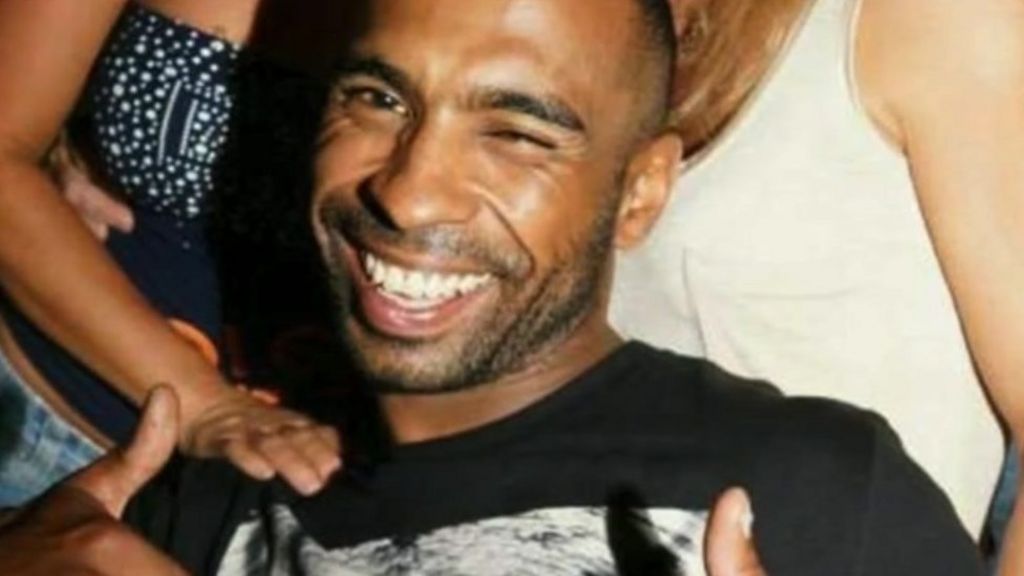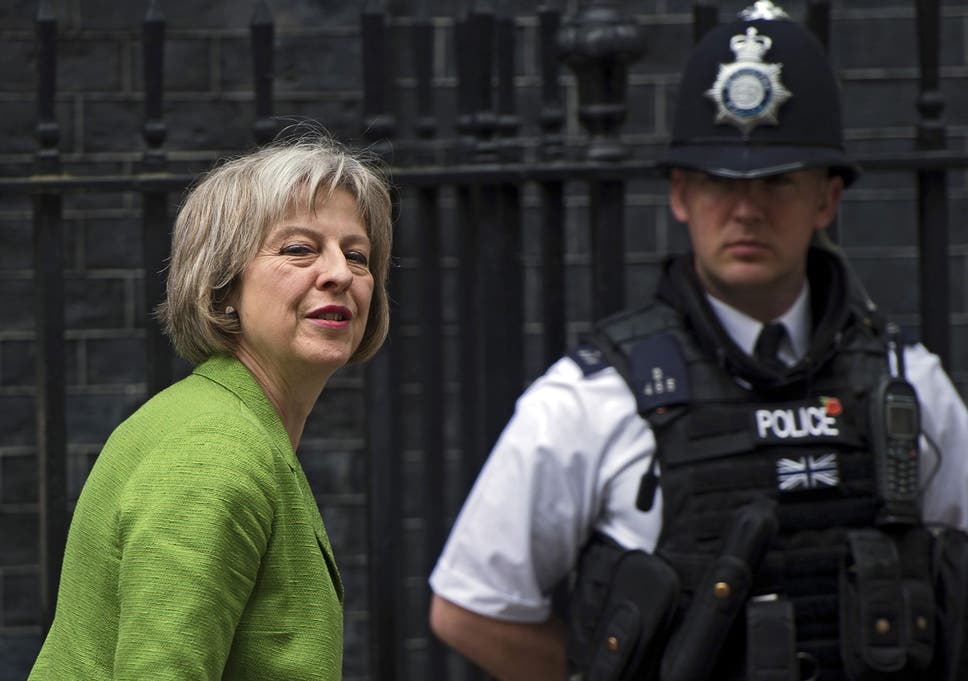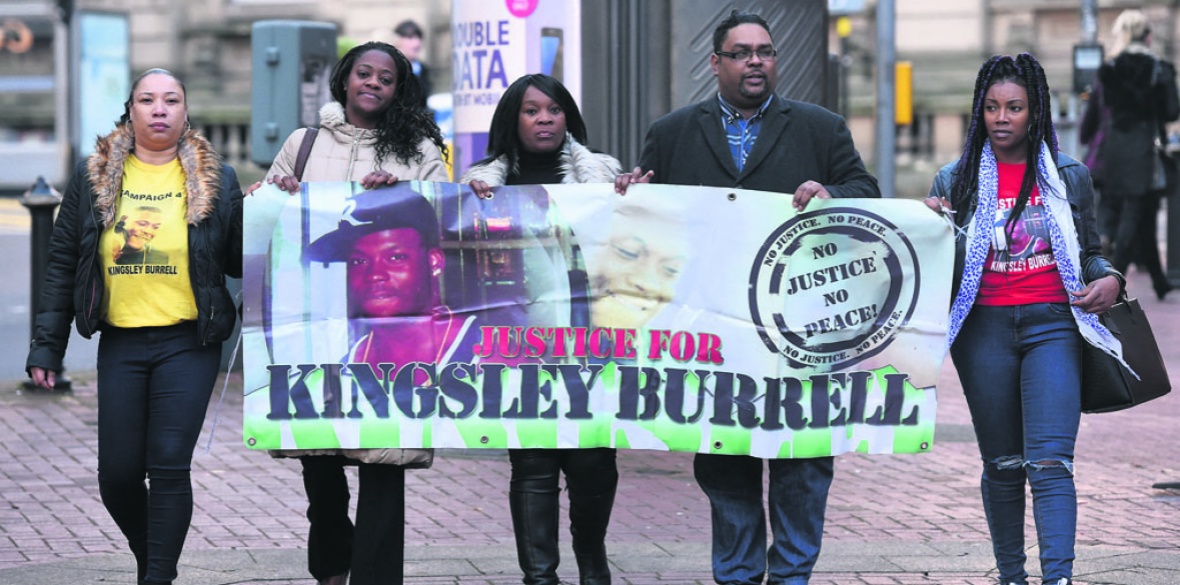
11th May 2015
The killings of Michael Brown, Eric Garner and Freddie Gray triggered protests not just in their home states but worldwide, with the campaign group Black Lives Matter emerging to protest the ongoing deaths at the hands of US police. The Oxford Union hosted a packed debate on whether the US is “institutionally racist”earlier this year, and the deaths, protests and trials resulting from the killings have all made regular headline news.
What has received far less attention has been the continued deaths at the hands of UK state officials. In March, the Institute for Race Relations published an in-depth report on 509 people of color who died in suspicious circumstances between 1991 and 2014 whilst in the custody of police, prison or immigration officers. Their analysis of these deaths – which averaged almost one per fortnight over the period covered – showed that a large number occurred after excessive use of force by the authorities, and an even larger number involved a culpable lack of care. Perhaps even more damning, the report concluded that “lessons are not being learnt; people die in similar ways year on year.”
But the big difference that emerges from the US is the handling of the officers involved. Officers stood trial following all three of the big recent cases from the US – even if, infamously, they have all so far been found not guilty. In the 509 cases examine by the IRR, however, a mere five cases – less than 1 percent – led to prosecutions – with not a single conviction. This is despite inquests recording verdicts of unlawful killing in over a dozen cases. Indeed, of the thousands of deaths in custody that have occurred since the late 1960s (current levels are around 600 per year), only one single case, that of David Oluwale in 1969, has resulted in the conviction of an officer.
One case which clearly illustrates the difficulties faced by families of the victims in their struggle for justice is that of Habib “Paps” Ullah.
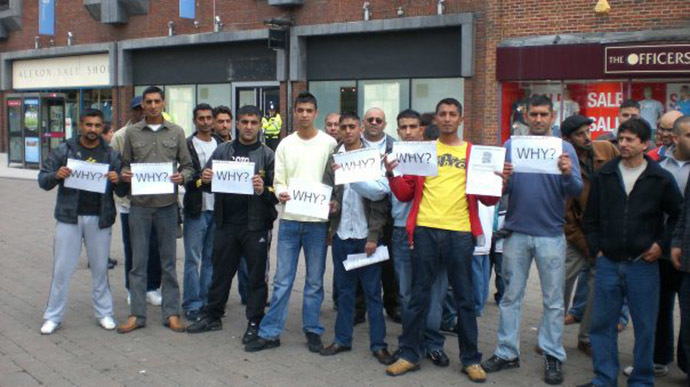
Habib and two of his friends were pulled over by police in High Wycombe, near London, on July 3, 2008. Habib was peaceful and compliant with the police, who he allowed to search him. However, when he was asked to open his mouth, he turned his back on them. That was the trigger for a vicious assault. Without warning, one officer, DS Liles, punched him in the back with maximum force, at which point four officers set upon him. Over the course of the next 10 minutes, Habib was subjected to further blows, knee strikes, a finger in his eye socket, the squeezing of his throat, and the full bodyweight of an officer on top of him whilst face down on the ground, along with a variety of “pain compliance” techniques. At one stage, DS Liles shouted to his colleagues: “Break his arm.”
Witnesses were screaming at the officers that they were strangling him, with another witness describing it as like something from a horror film. By the end of the assault, Habib had lost consciousness, with officers noting that his arm dropped to the floor when released, and that his eyes were motionless when his eyelids pulled back. Nevertheless, the police waited a further 10 minutes before calling an ambulance. Witnesses spoke of the police “standing around”; no CPR or mouth-to-mouth resuscitation was given to Habib, he was not put into a full recovery position, and his pulse was not taken: the officers all claimed that they believed Habib had been “faking it.” When an ambulance was finally called, the police gave the code B1, for a non-life threatening situation; by the time it arrived, witnesses – including the officers themselves – had confirmed Habib had been making very strange coughing sounds with his face turning first blue and then grey. Those sounds, it now seems clear, were almost certainly his death rattle. The small wrap of drugs which Habib had in his mouth had got lodged in his throat during the attack which, combined with likely “positional asphyxia” caused by the restraint, had caused him to suffocate.
The family have had to wait seven years until the inquest was finally held in February this year for this account of Habib’s death to finally emerge. Yet the initial police statements, written by the five officers involved immediately after Habib’s death, had pretty much admitted the full story. So what happened in the intervening seven years?
Last few days of inquest & legal submissions going in before Coroner sums up & gives directions tmrw #7YearsNoJusticepic.twitter.com/tg84X6Z2gO
— Justice4Paps (@Justice4Paps) 24 февраля 2015
Following Habib’s death being confirmed in the hospital, the Independent Police Complaints Commission (IPCC) was brought in to conduct an investigation, as is the usual practice following a death in custody. But those initial statements made by the officers were not the ones that were handed to the IPCC.
Rather, what happened is that senior police officers, members of the Police Federation, and a police solicitor oversaw a process in which the officers were instructed to rewrite their statements. References to the compliance of Habib and his friends; to the amount of force used by the police; to Habib’s condition (including his going limp and his strange breathing); to warnings from witnesses that Habib was being strangled and even to the presence of some of the witnesses were all removed from the final statements. It is entirely clear that senior officers, the Police Federation and the police solicitor were actively instigating a cover-up, in which the IPCC was being deliberately misled as to what was done to Habib, the warning signs about his condition, and even as to who witnessed the event.
At first, the cover-up worked. The IPCC investigation exonerated all the officers involved and concluded that no wrongdoing had taken place (none that is except for failing to inform Habib’s family of his death promptly enough, exhibiting a disregard for the family’s welfare that seems to be disgracefully common in such cases). Two years later, however, when the inquest began, the truth about the redacting of the statements began to emerge. Under cross-examination – when asked why so many relevant details now coming out were not included in the initial statements – one of the officers gave the game away. The inquest was suspended whilst the IPCC re-opened their investigation. The new investigation was to look into not only whether the original findings were affected by the new evidence, but also into whether the rewriting of the statements itself constituted wrongdoing.

This new investigation, amazingly, took the IPCC a full three years. The final report – which has still not been published – concluded that the case should be referred to the Crown Prosecution Service (the CPS) for criminal prosecution of the officers involved; charges to be considered included misconduct in public office, assault, intention to pervert the course of justice and perjury. Months passed – until, in August 2014, the CPS announced that it did not intend to prosecute a single one of the officers involved.
But that was not the end of the matter. An inquest had still to take place, and it was announced that this would be held in February 2015. If this inquest resulted in a verdict of unlawful killing, the potential for a criminal prosecution would be reopened.
As the inquest unfolded, the likelihood of this outcome seemed to grow. One expert witness after another concluded that the officers’ “restraint” significantly contributed to Habib’s death. Under cross-examination, even the police’s own preferred specialist – the appropriately named Dr Bleetman – eventually had to accept this (a finding he had denied in his initial report). Police trainers testified that many of the strikes and “compliance techniques” used by the officers were not approved, and even those that were should not have been administered in those circumstances – that is, without warning against a passive victim. It was revealed that, despite officers’ claims to be trying to open Habib’s mouth, some of the techniques used are actually deigned to close the mouth. The evidence of the inquest revealed, overwhelmingly, that the assault had been unlawful and had, in part at the very least, led to Habib’s death.
After a month taking evidence, the jury deliberated. Their highly critical narrative concluded: “Several officers recognised some signs associated with abnormal breathing but no practical assistance was offered. Valuable time was lost due to the fact that the officers believed him to be feigning unconsciousness. Once Mr Ullah was unconscious rigorous monitoring should have been undertaken. The jury believes that the level of monitoring was inadequate. Furthermore the jury considered that the incident was poorly managed. In particular the lack of communication and clear commands by a leading officer resulted in an uncoordinated and ineffective restraint.” Yet they did not reach a verdict of unlawful killing; rather they recorded “death by misadventure.” The last chance for a criminal prosecution was over; the officers who had just been shown to have launched an unprovoked attack on Habib and then left him to die would walk free.

These are the battles which families of victims face in case after case in this country: uphill struggles even just to find out what happened, endless delays, and then total lack of accountability or justice at the end of it all. The whole labyrinthine system is a masterclass in obfuscation and the perversion of justice under the guise of bureaucratic procedures. And every step of the way, the institutions involved emerge complicit in protecting the impunity of the police.
Firstly, the police themselves and the Police Federation. It was senior police officers and Police Federation members who stepped in to ensure that the original police statements were doctored to protect the officers. Yet they have never been called to account for their actions.
Secondly, the IPCC. Established in 2004 to replace the entirely discredited Police Complaints Commission, the IPCC was supposed to be an independent body which could be relied on to impartially investigate the police. Paps’ case shows how far this is from the truth. The senior officers and Police Federation members who instigated the cover-up were never the subject of the IPCC’s investigations, which focused solely on the officers involved in the death – despite the fact that the second investigation had a remit to specifically investigate that cover-up.
Furthermore, the fact that the scene was not treated as a crime scene, and that the officers were interviewed not as suspects but as witnesses is indicative of the bias that is at the very heart of the IPCC. These decisions – which are standard practice when investigating custody deaths – reveal that, from the very outset, the IPCC’s assumption is that no crime has been committed, and the idea that the officers involved might be responsible for the death is not even a possibility. Deaths in custody are treated not as crimes, but, at worst, as tragic accidents. This goes beyond the concept of “innocent until proven guilty”; the IPCC, begins by assuming there is not even anything to be guilty of. And inasmuch as there is any case to answer, it is only ever for the officers on the ground to answer – never their superiors.
None of this should be surprising, however, given the composition of the IPCC: eight out of its nine most senior members are themselves former police officers. Some independence. In 2012, the IPCC was even threatened with contempt of court proceedings by a coroner following its refusal to hand over key evidence during the Mark Duggan case. The IPCC is clearly unable to act as the independent watchdog it proclaims to be; indeed, in 2013 a parliamentary inquiry concluded that the IPCC “has neither the powers nor the resources that it needs to get to the truth when the integrity of the police is in doubt.”
Thirdly, the CPS. The decision not to prosecute the officers – after the IPCC had handed them detailed evidence of assault, perjury, and intent to pervert the course of justice – can only be understood in terms of an institutional determination to protect the police from prosecution at all costs. The evidence to mount a prosecution clearly was there. Even the police officers themselves admitted that the passages they removed from their statements were relevant and should have been included. Yet, as one officer noted at the inquest: “The Crown Prosecution Service concluded we were looking to make the evidence more accurate and not wishing to mislead people.” Given what was removed – details of the assault, details about Habib’s condition, details of other witnesses – even the IPCC concluded there was no way that making these omissions could have made the evidence ‘more accurate’.
But again, the CPS have form in this regard. In 1999, a government inquiry conducted by Gerald Butler was highly critical of the CPS’s reluctance to prosecute police officers involved in custody deaths. Since then, little has changed. In 2011, Janet Alder made history as the first person ever to take the CPS to court. Janet’s brother had died in police custody in Hull in 1998 and, as ever, the CPS refused to prosecute the officers involved. Four years later, after massive campaigning and evidence-gathering by the family, the CPS did eventually bring a case against five of the officers – but, it seems, deliberately bungled the case. Key pieces of evidence were not submitted, and others were conflated and thrown out. As Janet Alder said: “I don’t think it’s incompetence, because they’ve been prosecuting cases for hundreds of years… I think the CPS from the beginning had absolutely no intention whatsoever of prosecuting these officers. They’d proved that for four years. ”
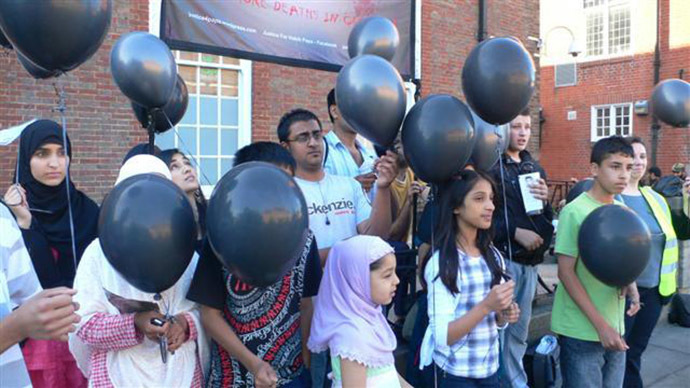
Between them, these institutions – the Police Federation, the IPCC (and its predecessor) and the CPS – have shielded the police from justice for decades. This shielding has allowed a culture of impunity to persist and grow where officers believe they will never be held to account for their actions. What was particularly revealing about Habib’s inquest was that the more senior the officers involved, the more brazen and vicious were their actions.
The most senior officer, DS Liles, with eighteen years experience, was the one who initiated and led the attack itself, but also who showed the least remorse and the most arrogance subsequently, telling the jurors he would act in just the same way again. His younger colleagues, in contrast, were clearly worried about what had happened: one, PC Pomery, confessed to a colleague that he was worried he had gripped Habib’s throat too hard, for example. Liles clearly knew, however, that they had nothing to worry about. He knew they would be protected.
Their victim was well chosen. Many of the suspicious deaths in custody involve members of vulnerable groups who are already treated with contempt by society. Victims often have mental health problems; in Habib’s case, he was a drug user (a point which the officers never failed to mention in their testimonies at the inquest). The officers knew, it seems, that such a character – and a Muslim to boot – could hope for little sympathy from the jury. They may not have expected him to die from the attack – but the point is, they knew they could attack him with impunity, breaking every rule in the book. And those who had been there the longest, knew this the most clearly.
But for the family of Habib “Paps” Ullah – and for many others – the struggle for justice continues. The police’s internal gross misconduct case is due to take place in June; it will be one of the first ever to be held in public. In addition, the family have instigated a civil claim against Thames Valley Police on the basis of assault and breaches of the Human Rights Act Article 2, the Right to Life.
Over the past year, Prime Minister David Cameron has constantly declared his undying commitment to the “rule of law.” Yet while his own police force retain the level of impunity they currently enjoy, the notion remains a total fiction.


